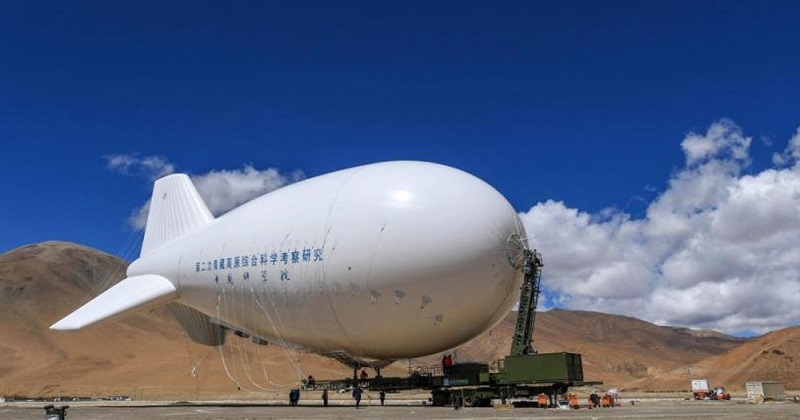
While worldwide meteorologists use weather balloons to observe atmospheric changes, China has taken it a step farther. Beijing has flown an airship at a record altitude above Mount Everest to collect data on atmospheric composition and the water vapour conveying mechanism from the surface.
The airship sailed reached a height of 9,032 metres, which is higher than Mount Everest’s elevation of 8,849 metres. The airship took off from a base camp at a height of 4,300 metres atop the world’s highest mountain, flying at a speed of 30 metres per second. The blimp, dubbed Jimu No.1, weighs 2.625 tonnes and has a capacity of 9,060 cubic metres. The vehicle affixed to the bottom of the airship weighs 90 tonnes.
According to CGTN, the blimp is mostly used to collect data on the atmosphere’s composition, which includes information on black carbon, dust, carbon dioxide, and methane levels. Scientists are investigating the method of water vapour movement from the surface to an altitude of 9000 metres.

The Chinese Academy of Sciences researchers, the Institute of Tibetan Plateau Research and the Aerospace Information Research Institute, as well as the Changchun Institute of Optics, Fine Mechanics and Physics are members of the country’s ‘Earth Summit Mission 2022’ expedition. The airship soared 9,032 metres over the mountain’s summit. According to Chinese experts, it is critical to investigate how the westerly wind influences the environmental change on the Tibet Plateau.
The current world record comes only days after China finished a high-altitude ozone observation campaign on Everest as part of the second comprehensive scientific study effort initiated in 2017. During the campaign, a dozen ozonesonde balloons were released from the base camp and reached an altitude of 5,200 metres, with the highest balloon touching down 39.1 kilometres above the base camp.
‘We primarily want to investigate ozone, which is both beneficial in the stratosphere for blocking the sun’s UV rays and providing humans with a protective layer and detrimental to human health when it becomes active and is harmful to our respiratory system,’ Zhu Tong, head of Peking University’s College of Environmental Sciences and Engineering, told CGTN. The study generated crucial data on Ozone that would be useful in monitoring environmental changes in the region.

Post Your Comments